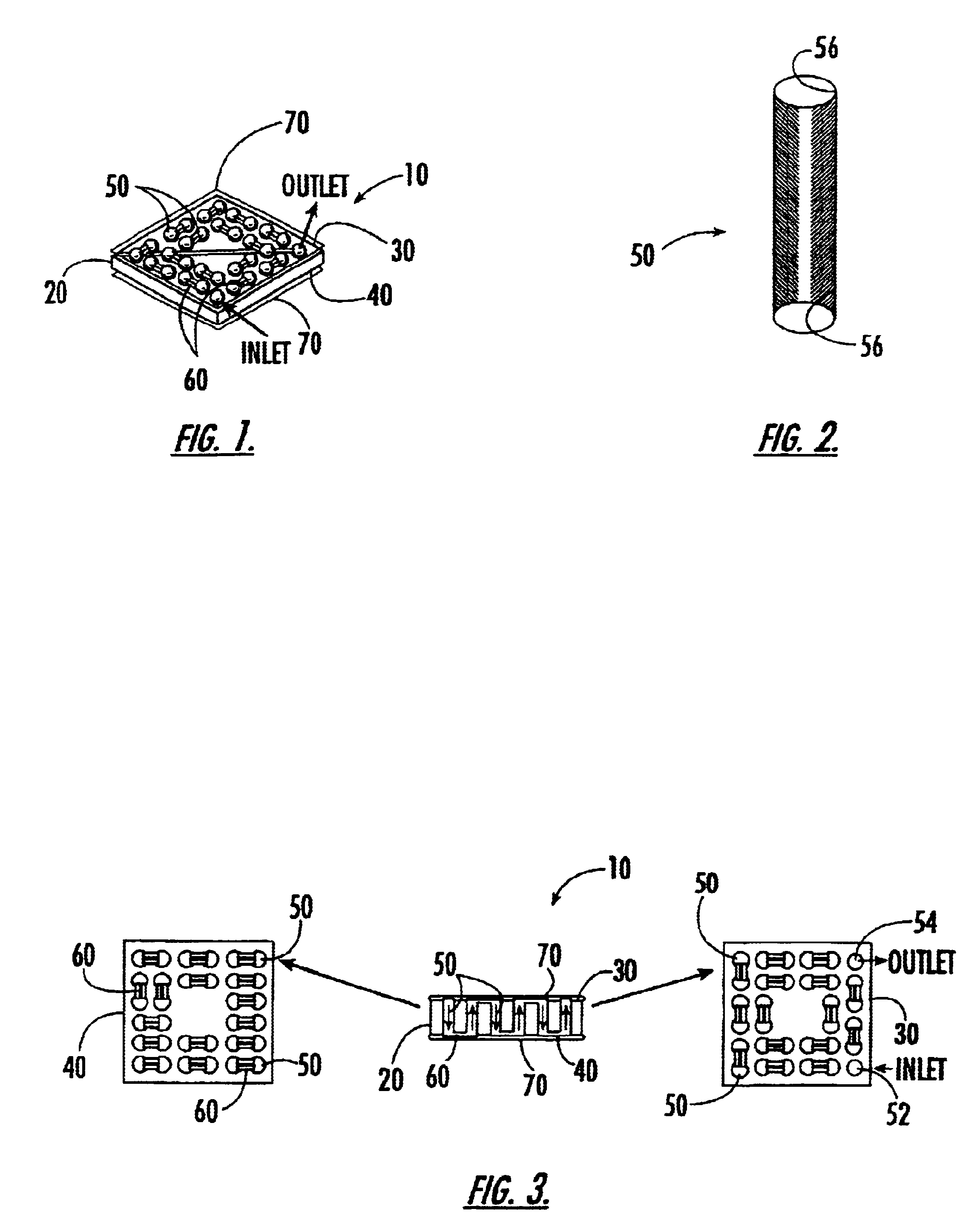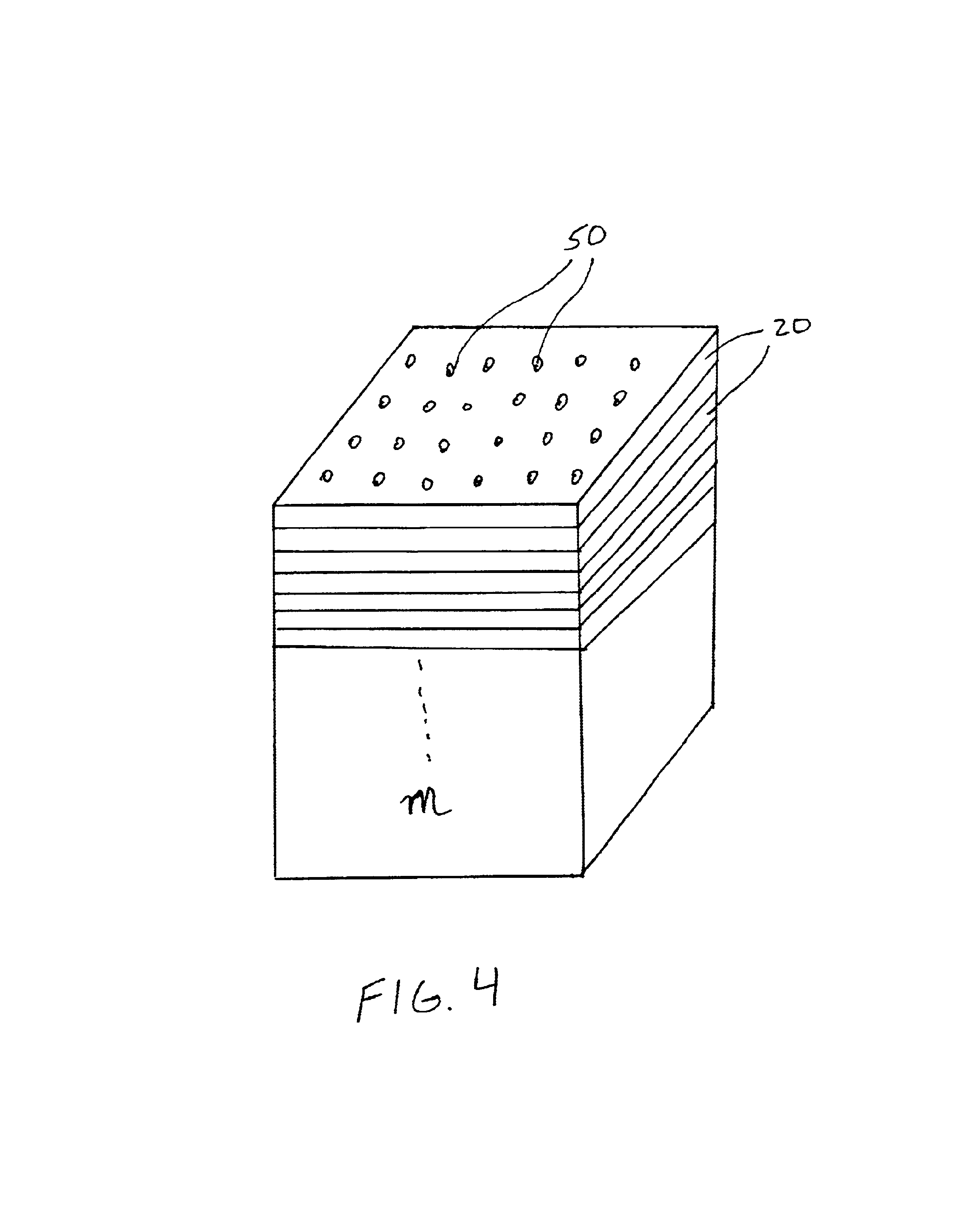Four dimensional biochip design for high throughput applications and methods of using the four dimensional biochip
a biochip and four-dimensional technology, applied in the field of 4d biochips, can solve the problems of poor repeatability of experiments, limited fodor chips, and inability to compare accurately, and achieve the effect of increasing efficiency and throughpu
- Summary
- Abstract
- Description
- Claims
- Application Information
AI Technical Summary
Benefits of technology
Problems solved by technology
Method used
Image
Examples
Embodiment Construction
[0035]The present invention relates to a 4D biochip that overcomes many of the above-noted problems with prior biochip devices and assay systems by providing a means for performing a parallel assay with a large number of biosamples (e.g. patients) for a large number of bioelements in parallel. Such assays are termed herein “parallel-parallel assays”. The throughput of a simple experiment using a 4D biochip of the present invention can be higher than the advanced conventional biochips by several orders of magnitude. In addition, the 4D biochip described herein can generate experimental data for multiple biosamples in parallel or at the same experimental time and same experimental conditions. The experimental errors for between biosample comparison are significantly reduced by using the present 4D biochip.
[0036]By performing parallel-parallel assays using the present 4D biochips, genotypes can be determined using, for example, traditional gel electrophoresis of PCR products of a targe...
PUM
| Property | Measurement | Unit |
|---|---|---|
| Diameter | aaaaa | aaaaa |
| Diameter | aaaaa | aaaaa |
| Flow rate | aaaaa | aaaaa |
Abstract
Description
Claims
Application Information
 Login to View More
Login to View More - R&D
- Intellectual Property
- Life Sciences
- Materials
- Tech Scout
- Unparalleled Data Quality
- Higher Quality Content
- 60% Fewer Hallucinations
Browse by: Latest US Patents, China's latest patents, Technical Efficacy Thesaurus, Application Domain, Technology Topic, Popular Technical Reports.
© 2025 PatSnap. All rights reserved.Legal|Privacy policy|Modern Slavery Act Transparency Statement|Sitemap|About US| Contact US: help@patsnap.com



